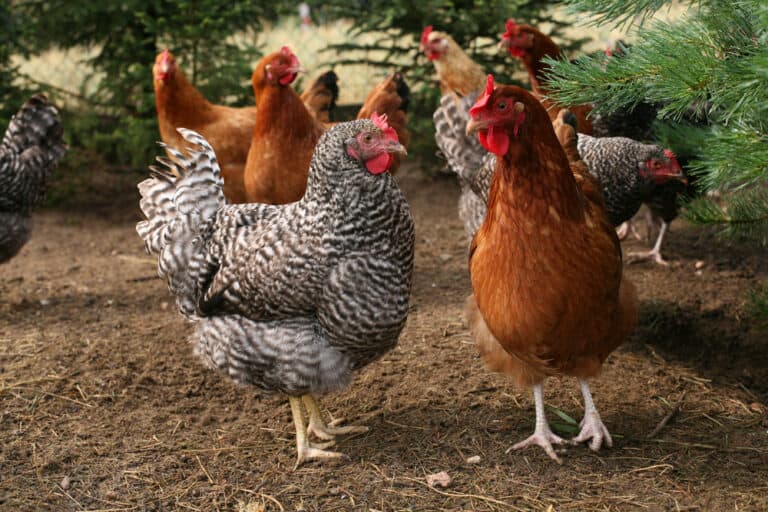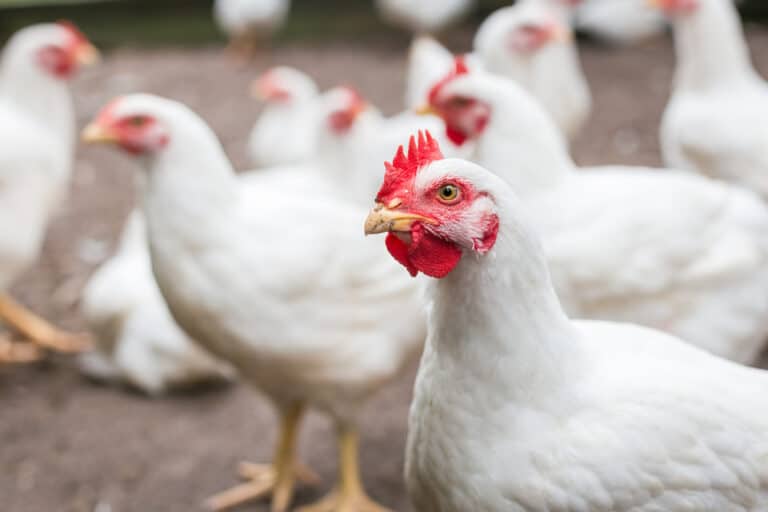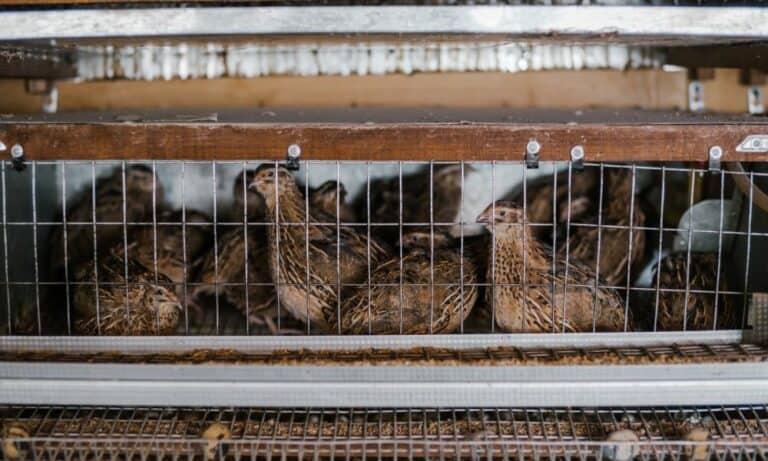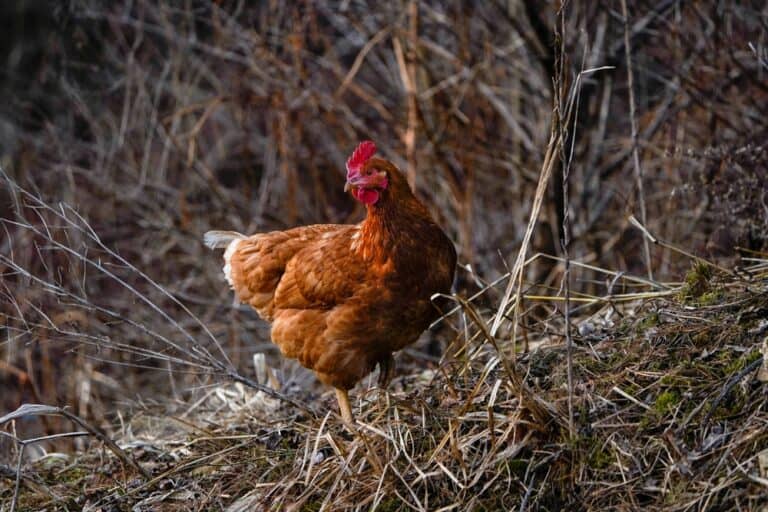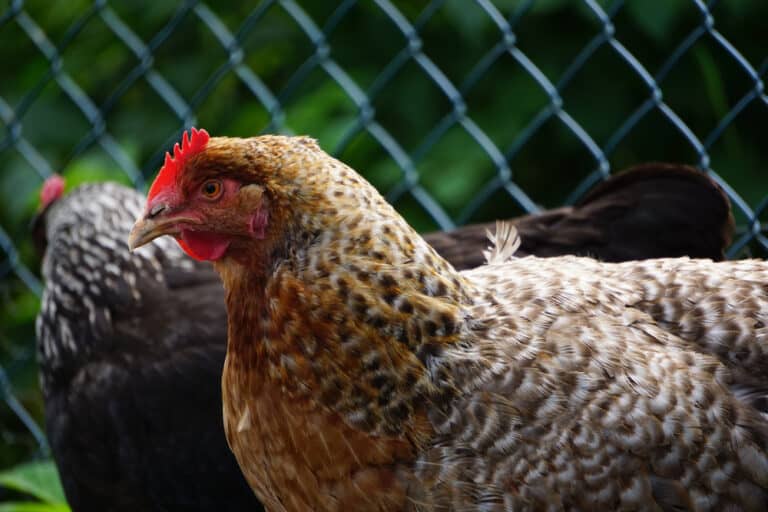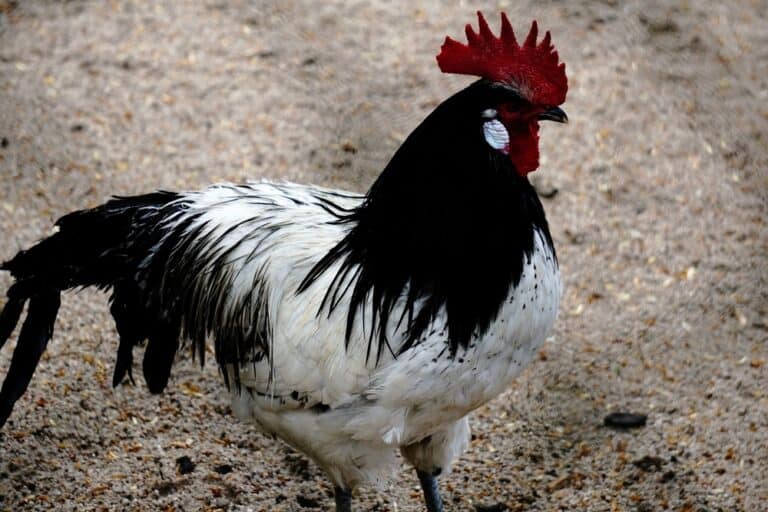Native to the Islands of Sumatra, the Sumatra chicken is a rare and stunning breed highly sought-after by poultry keepers and breeders. It’s a distinctive bird that gives you an idea of what wild chickens looked like before domestication.
With long flowing curves, attractive plumage, and plenty of tail feathering, the Sumatra looks similar to a pheasant in many ways. While they may be small, Sumatra hens produce an abundant number of eggs and are good winter layers.
On top of that, they often exhibit self-sufficient characteristics, which makes them ideal for life off-grid on a homestead.
Do you want to uncover other interesting secrets of this breed? We’ve got you covered.
In this guide, we’ll explore the exciting origins of the Sumatra chickens, as well as their unique characteristics, uses, and temperament.
Let’s get right to it!
Origin of Sumatra Chicken
The Sumatra chicken traces its origin to the Isles of Sumatra, hence the name. They are also found in surrounding regions, including Borneo and Java.
Shaped by the wild, these birds are probably the basis for many domesticated chicken breeds today. It’s also believed the Sumatra chicken is a crossbreed of the feral Kampong chicken and an extinct species of wild game birds. But this topic is still up for debate.
Originally, the residents in Indonesia Island captured Sumatra roosters and used them for cockfighting, a popular sport in parts of Southeast Asia.
Later, they would be released back to the wild after the breeding season because their aggressive temperament and fighting ability declined.
Although Sumatras were advertised as fighting birds, the cocks were not well suited for fighting, unlike many wild game birds at the time. However, the hens were favored to produce the best fighters in the ring when crossed with Rampur Boalia Black, Sinhalese Game, and Hyderabad.
The Sumatra chicken found its way to the United States in April 1847. Introduced by J.A.C Butters of Roxbury, MA, as a fighting breed, the bird became super popular among poultry keepers and enthusiasts. This led to subsequent importations throughout the 1850s.
The Sumatra chicken we know today was developed at the Smithsonian Institute in Washington, D.C. by Nelson A. Wood in 1885. The institution focused on improving the breed’s productivity and its long-flowing feathers.
But even before that, the American Poultry Association of Standard of Perfection recognized and admitted the breed, despite its small size.
Today, the Sumatra Chicken is super rare, and it’s even on the Priority List of American Livestock Breeds Conservancy’s Conservation under the critical category. It’s raised primarily as an ornamental chicken breed.
Sumatra Chicken: Physical Characteristics
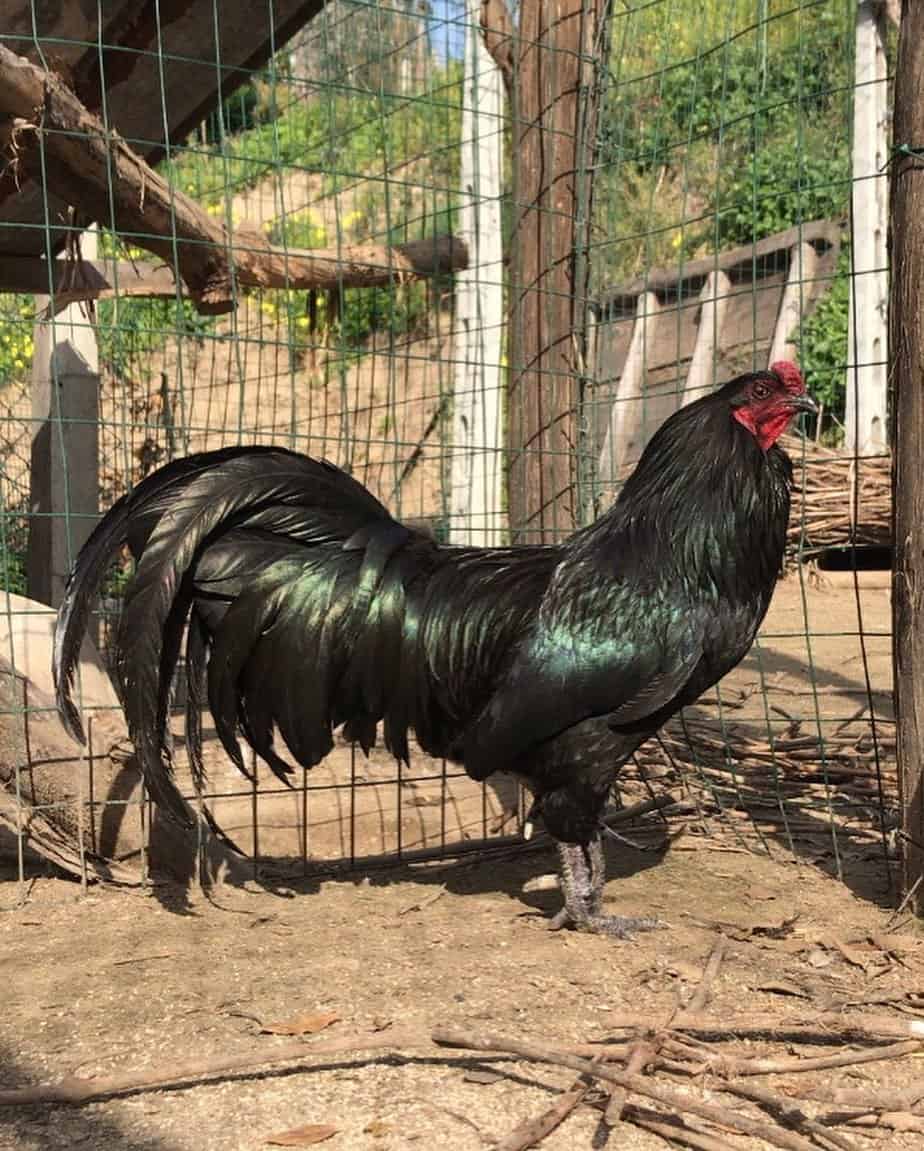
Without a doubt, the Sumatra is the most stunning breed of chicken. The birds possess distinctive physical attributes that set them apart from other domesticated chicken breeds. Let’s start with their color.
Color
In the rugged terrains and tropical forests of Sumatra, this breed existed in a few color varieties, but the most common was black.
The Black Sumatra chicken was popular among poultry owners and breeders, thanks to their long, flowing tails, with a hint of beetle green sheen, which shines under sunlight.
What’s interesting, they have gypsy-colored faces, constantly shifting from deep purple to rich black. And the black pigmentation doesn’t stop at the feathers. Black Sumatras also have black skin and bones, like the Ayam Cemani and Silkie breeds.
Besides black, Blue Sumatra, White Sumatra, and Dun Sumatra are available. However, only the black variety is recognized by the American Poultry Association.
Appearance
Aside from their gorgeous pigmentation, Sumatra chickens look more like jungle fowl of the far east than domestic chickens. This is due to their personality, long legs, sleek, streamlined bodies, and straight posture like they are ready to fly. These birds also have long, flowing tail feathers with greenish-black tones.
The wattles of Sumatras are small and sometimes seem non-existent. The small earlobes and bright red pea comb also help the chicken to stand out. And to add icing to the cake, the chickens feature an unusual trait: three spurs on each leg.
No one knows for sure how the Spurs came to exist. Some speculate the chickens developed them while in the jungle habitat of the Islands of Sumatra, others believe cockfighting enthusiasts created them.
Size and Weight
As mentioned earlier, the Sumatra chicken is a small breed. A standard rooster weighs around 2.25 and 2.70 kg (at least 5 lbs), while the hen weighs approximately 1.80 kg (4 lbs). In the bantam category, males can reach 0.735kg (1.6 lbs), and females grow up to 0.625kg(1.3 lbs).
Even though it’s recognized as a standard breed, this breed demands respect because of its majestic presence and royal nature that contradicts its wild origins.
Sumatra Chicken: Behavior and Temperament
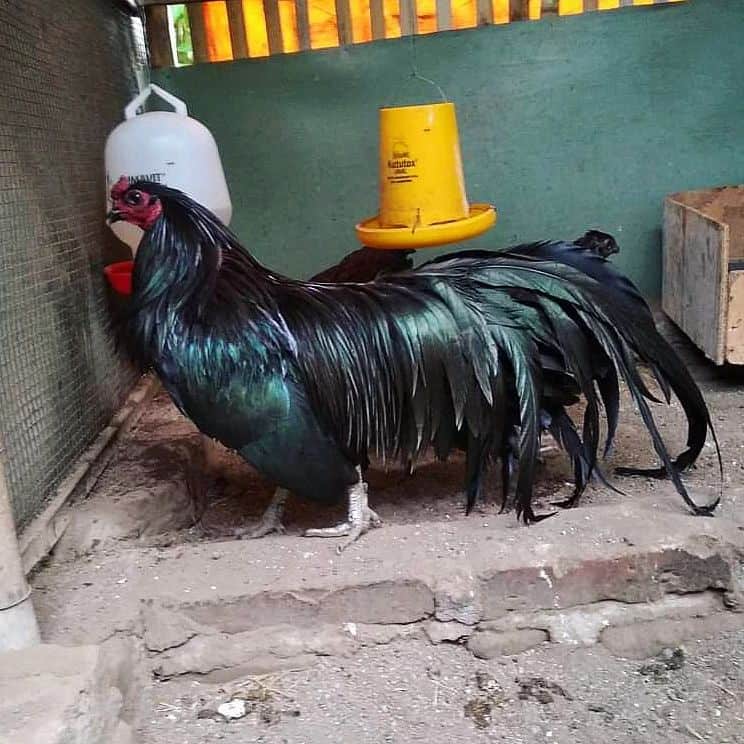
Before introducing the Sumatra breed to your flock, it helps to learn about its behavior and temperament.
Sumatra chickens are spirited birds that enjoy their independence. They are alert, intelligent, and curious, with an impressive drive for self -preservation. As said earlier, Sumatras have pheasant-like behaviors. They prefer to explore their environment for good cover from aerial and ground predators.
They are also more aware of their surroundings. Most times, the bird will move under bushes and shrubs foraging and keeping an eye out for potential threats. Furthermore, they love to roost in high spots to avoid predators.
In addition, they are excellent jumpers, often launching themselves vertically whenever they feel threatened. Speaking of taking to the sky, these chickens can cover a reasonable distance when flying. It’s believed these birds used to fly between Sumatra and Java Islands.
As for aggression, the Sumatra chicken tends to display aggressive tendencies towards other birds, animals, and sometimes people. The roosters usually fight for dominance, especially during the breeding season. However, they rarely kill each other.
Because of this, Sumatras require a separate chicken coop to avoid fights and injuries. The enclosure should also prevent these fliers from flying off. But remember, they require large spaces where they can forage freely.
Despite their aggressiveness and reputation for flightiness, these chickens are loyal and usually show affection to their owners. In other words, they form strong bonds with humans who take good care of them.
The Sumatra chicken is an adaptable and low-maintenance breed. However, they are not the best backyard fowl because they are slightly aggressive, prone to flying off, and can prove difficult to handle for first-timers.
Sumatra Chicken: Meat and Egg Production
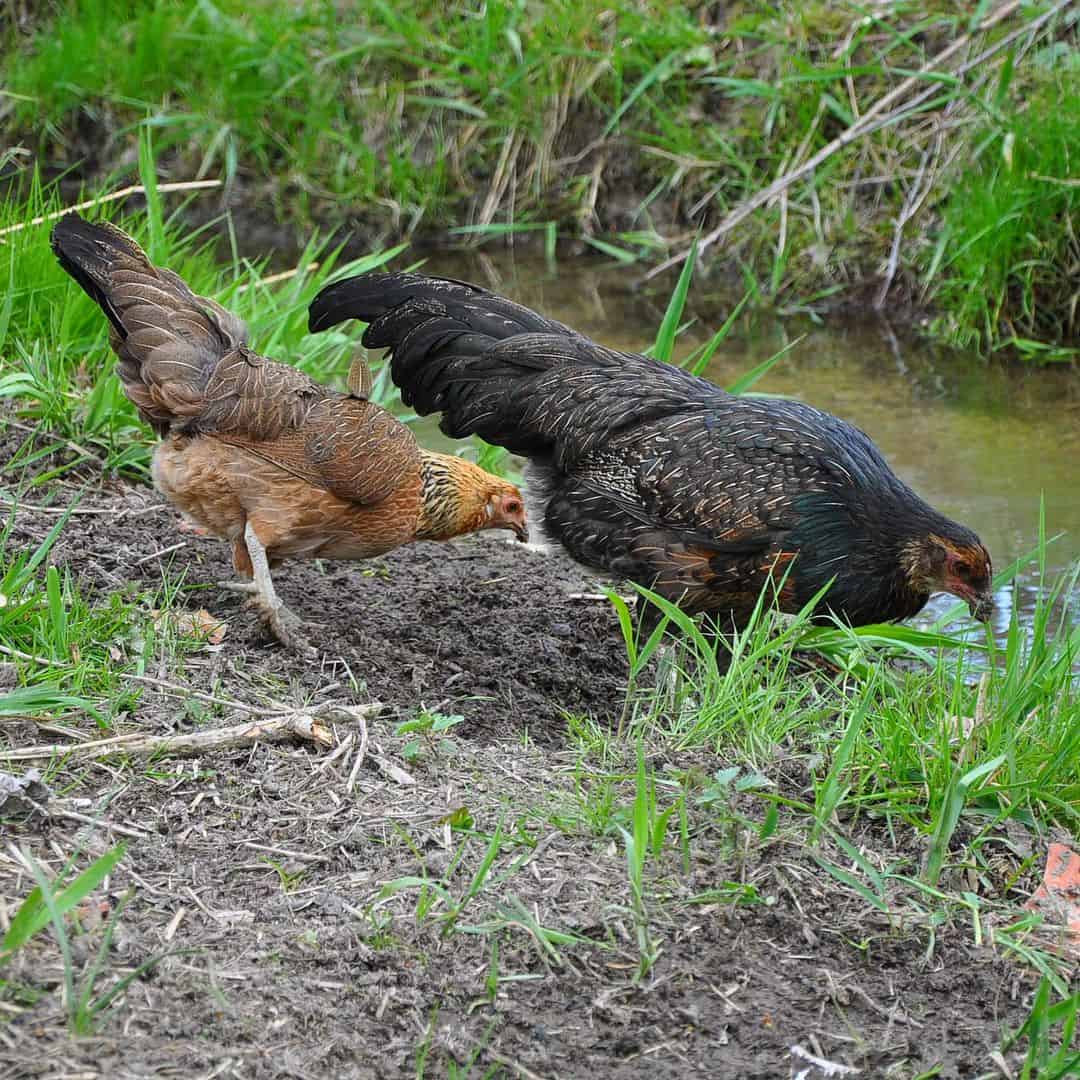
The Sumatra chickens are mainly kept as an ornamental breed, thanks to their striking appearance. They add a unique touch to any backyard or poultry breeding farm and are often exhibited in shows.
But remember, Sumatras are a versatile breed of birds and can have a variety of uses depending on their management and breeding.
While Sumatras are not the most productive chicken breed for meat and egg production, they produce high-quality meat and tasty eggs. Sumatra hens can lay approximately 100 small to medium-sized eggs with white coloration.
Even better, they are good winter layers. As long as they are provided with a nutritious meal and a comfortable environment, they can produce eggs throughout winter.
But can they go broody and raise baby chicks?
Yes, the hens can get broody and make excellent mothers. On the other hand, their offspring are hard and easy to care for.
Sumatra Chicken: Hardiness and Health Care
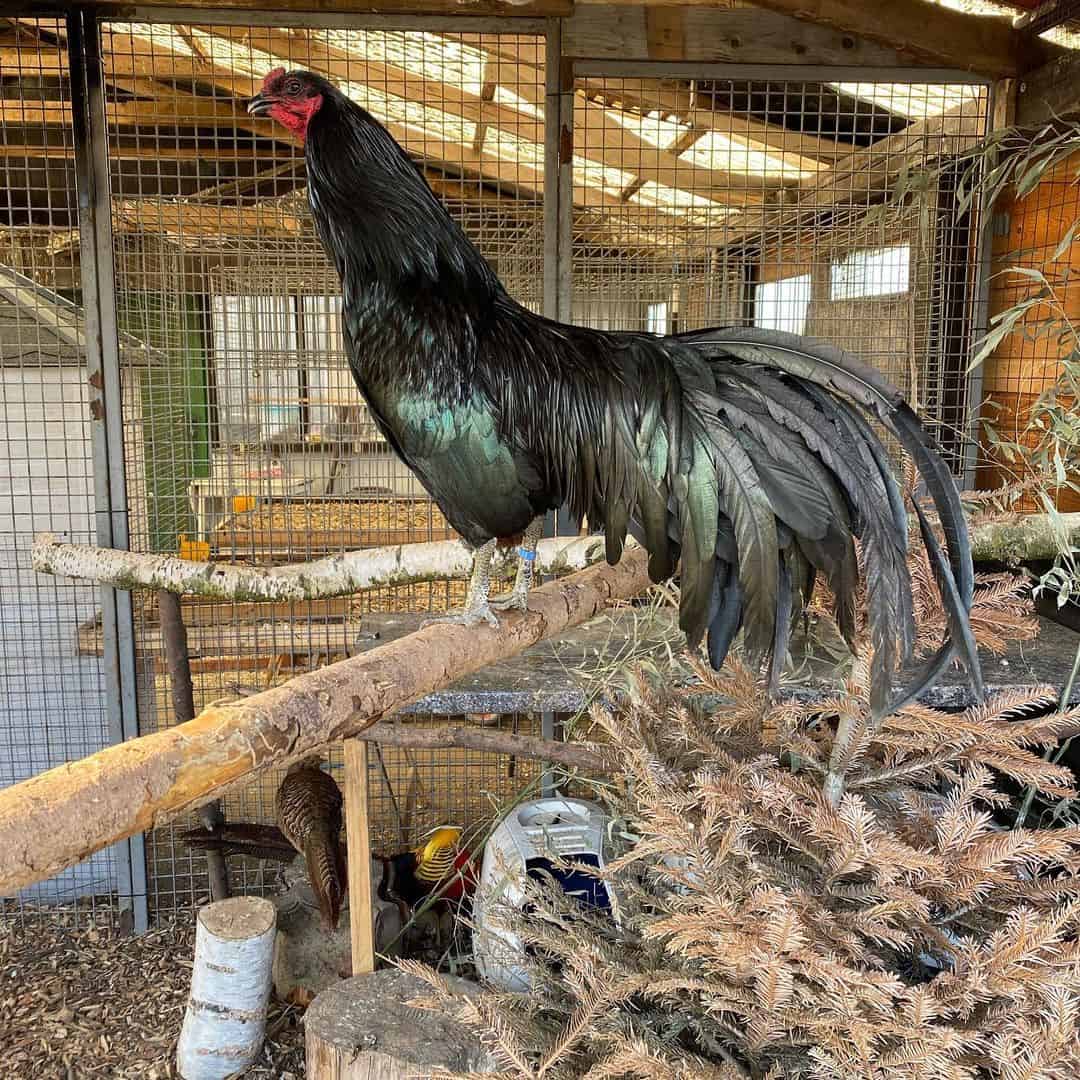
Sumatra chickens are a hardy breed that withstands cold and hot climates. However, they prefer environments that mimic the climates of their area of origin.
Since they come from the islands of Indonesia, these chickens can thrive in hot and humid climates or warm climates. In cold regions, Sumatrans might need protection from the harsh weather.
On another note, the Sumatra chicken is relatively resistant to a variety of poultry diseases. However, they are prone to respiratory infections, reproductive problems, and parasite infestation.
For this reason, they require vaccinations and regular monitoring for symptoms of stress and infections. It is also crucial to make sure they live in a clean, well-ventilated, and comfortable environment to prevent diseases and stress.
Bottom Line
Prized for its gorgeous black plumage and fascinating appearance, the Sumatra chicken adds uniqueness to backyards and breeding farms. Besides their elegance, they produce high-quality meat and flavorful eggs.
Sure, they might be aggressive and hard to handle sometimes. But they are loyal and friendly to owners who care for and feed them.
For the best result, ensure you offer your fowl a nutritious feed rich in proteins, vitamins, carbohydrates, and other essential nutrients. Also, give them fresh water, a comfortable environment safe from predators, and plenty of forging space.
If you want your Sumatra flock to stay healthy and happy, remember to keep up with regular health checkups and vaccinations.
That marks the end of our article. We hope you have found it useful!
If you have any questions, tell us in the comments section below.

